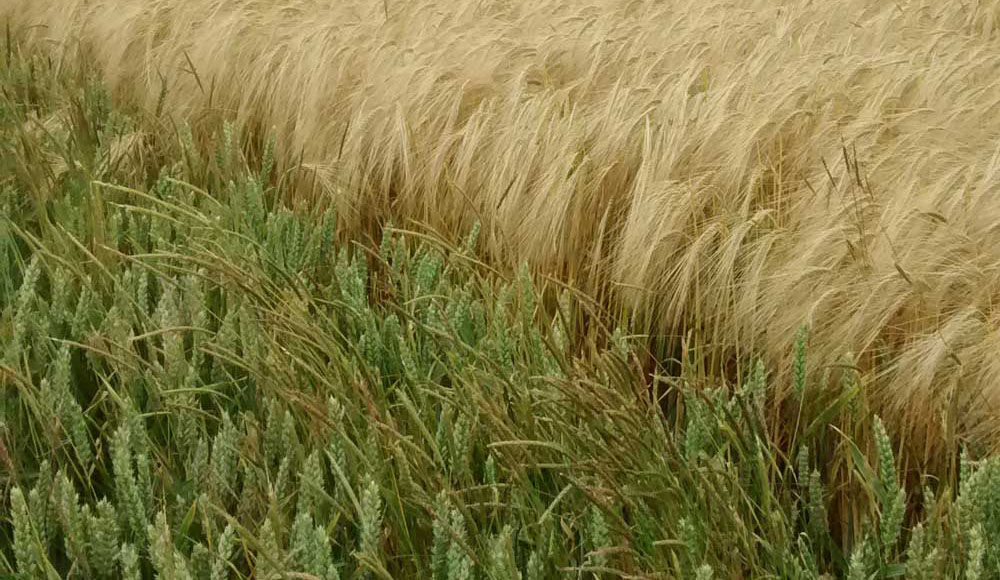- Blackgrass
Damage
Black-grass, Alopecurus myosuroides, can seriously reduce crop yields through competition for nutrients, especially nitrogen. Although on an individual plant basis black-grass is only moderately competitive, very high populations can occur (many hundreds of plants/m2) which can reduce yield by >70% in serious cases. On average, black-grass populations of 12 – 25 plants/m2 cause yield losses of 0.4 – 0.8 t wheat /ha but losses can be much higher in conditions which favour black-grass (e.g. uncompetitive crops).
Know your enemy
Black-grass is an annual grass-weed propagated solely by seeds and, if uncontrolled, weed populations can increase by >10 fold/year. For successful long-term control, seed return must be minimised. The following five key characteristics underpin successful non-chemical management strategies:
- emergence pattern – 80% of weed emergence occurs in early autumn
- plants can only emerge successfully from seeds within 5 cm of the soil surface
- seed longevity in soil - 75% decline/year. (About 3% of seeds will still be viable after 3 years burial)
- seed shedding pattern in wheat - mid-June to mid-August with peak in July; most shed pre-harvest
- population dynamics – >95% control needed to prevent weed increasing
- a competitive weed – aim for <5 plants/m2 to minimise yield loss and seed return
Herbicide resistance
Since first being found in Oxfordshire in 1982, herbicide-resistant black-grass has now spread to virtually all of the estimated 20,000 farms in 37 counties where herbicides are applied regularly for black-grass control. Populations show resistance to a wide range of different modes of action, with both ACCase and ALS target site resistance (TSR) and non-target site resistance (NTSR), especially enhanced metabolism, now widespread. The frequency of multiple resistance can be demonstrated by results from tests on 132 black-grass samples collected and tested by Rothamsted Research in 2014: 98% showed resistance to at least one herbicide, with 77% resistant to mesosulfuron + iodosulfuron, 60% resistant to cycloxydim, 90% resistant to fenoxaprop and 79% resistant to all three herbicides.
Management Options
Herbicide use must be integrated with greater use of non-chemical control methods to reduce the reliance on herbicides. The potential of such methods for black-grass control (from Lutman, Moss, Cook & Welham, 2013) is summarised below. The wide range of control level for ploughing can be explained by considering where in the soil profile the black-grass seed is and this will depend on the cropping history at a location. If it is near the top from recent seed shed ploughing may help to bury it. Conversely, if the black-grass seed is lower down ploughing may make the situation worse (which is why the control range includes negative values). This needs to be considered when deciding whether to plough or not. Delayed autumn drilling can reduce black-grass but if it interferes with establishment of the main crop there may be more holes where the black-grass can come in. Therefore a balance needs to be found and drilling should not be delayed too long to ensure the main crop comes up well. Spring cropping and wider rotations are the most reliable ways of controlling black-grass.
% control achieved | |||
Method | Mean | Range | Comments |
Ploughing | 69% | -82% to 96% | Rotational ploughing has considerable benefits |
Delayed autumn drilling | 31% | -64% to 97% | The later the better – but increased risk. |
Higher seed rates | 26% | +7% to 63% | The higher the better – but lodging issues |
More competitive cultivars | 22% | + 8% to 45% | Useful, but marginal effects |
Spring cropping | 88% | +78% to 96% | Challenging on heavy soils; limited herbicides |
Fallowing/grass leys | 70–80 % per year | Absence of new seeding critical | |
| Hand roguing | up to 90%? | Can help prevent seed return but labour intensive | |
| Mechanical weeding | 50-80%? | New equipment required | |
| Spraying off patches in wheat in early June | up to 100% | Glyphosate worst patches - also removes the wheat | |
Barley is much more competitive than wheat and in particular hybrid barley:

Related links